How did you choose Textile Design as a major?
Honestly, I stumbled upon it, and I’m so glad I did! I’ve always loved creating – in digital and physical mediums. I had taken graphic design, fine art, and many photography courses in high school and absolutely loved them, but I never saw those forms of art as a career for myself. I found textile design through my mom and sister. They were on a university tour (my sister is now a Jefferson graduate with a bachelor’s in Architecture) and were brought down to the textile studio. My mom sent me images of the three display cases we have in our studio that show current student work, and I knew then that textile design was the perfect mesh of all of my interests and that it was the perfect fit for me. It is such a fun, dynamic, professional, and technical program that is not only focused on creating beautiful textiles but also textiles that serve a purpose.
Do you have a background in design or textiles?
Before coming to Jefferson for Textile Design, I had never knit, woven, or created print designs. I honestly probably wouldn’t have even known the difference between a knit and woven! Although I started at ground zero in terms of making textiles, I did come in with design experience in other areas. In elementary and middle school, I was in gifted and talented art program and took every drawing class I could. In high school, I took two years of graphic design and four years of digital photography, where I learned about composition, the principles and elements of art, and the necessary tools and methods to illustrate my work in the best way possible. I highly recommend having experience in photography and graphic design, at least a little bit, before coming into the program. The knowledge I learned about the Adobe suite programs was incredibly useful for mapping my textiles onto finished products and allowed me to present my work professionally.

What’s the best piece of advice you’ve received from another designer?
I was told never to be afraid to mess up and try every design thought you have – even if you know, it will turn out bad. You can always learn from mistakes, and they often lead you to a new design or an even better one than you had initially planned! I was always apprehensive about messing up a swatch because I’m a perfectionist and always have been. Once I started making swatches with this mentality, I began learning faster. I found that I fully understood the functions of the knitting machines and could now anticipate mistakes when I think of design ideas and work around them to find a solution to make a successful swatch.
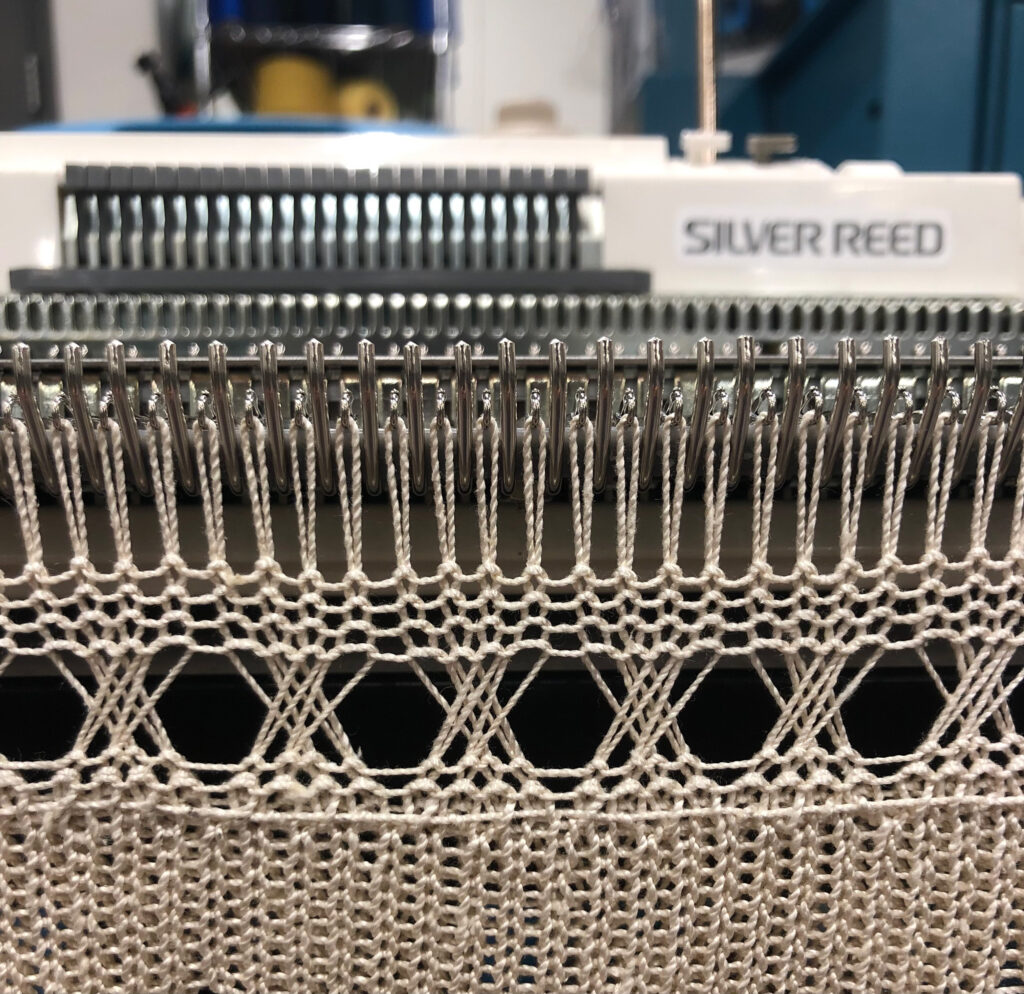
Which design from your portfolio are you most proud of or is most special to you?
In Advanced Weft Knit with Professor Meghan Kelly, I created a collection based on the activity of antiquing. I love exploring antique stores and noticing all of the surface textures of historical items. What I enjoy the most is seeing the historical progression through the objects. In this knit collection, I programmed and knit a shaped and plated fabric to be sewn onto an antique wooden sewing bag frame. It came out exactly as planned and embodied the beautifully antiquated textured surfaces of objects in antique stores! This project was most special to me because it was the first full product I had ever knit on a knitting machine and was the successful result of much problem-solving and programming troubleshooting to obtain the result I wanted. It was my “ah ha!” moment when I knew I could actually do this!
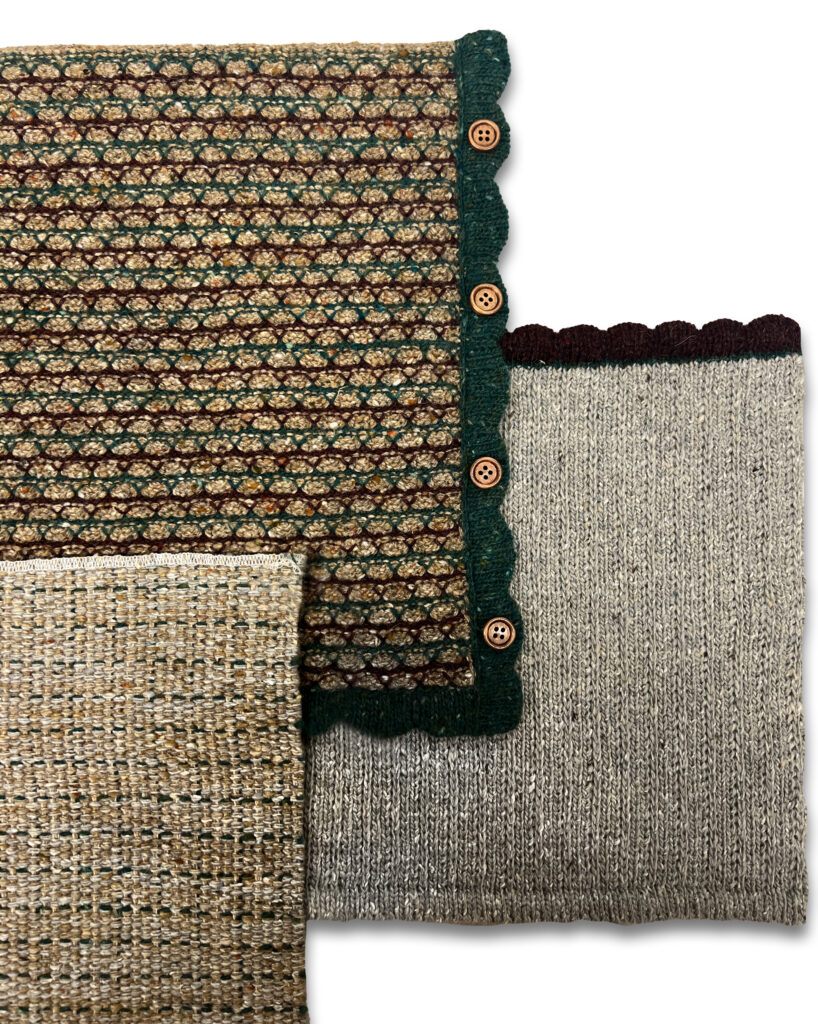
What would you like to be doing in 5 years?
I would love to work side by side with a fashion designer or fashion company to program and create sustainable knitwear. I have had the pleasure of doing two knitwear collaborations with fashion design students here at Jefferson. I interpreted their concepts and patterns into fully fashioned garments for their senior collections. Collaboration is my passion, and I would love this dynamic to be at the center of my career. There is so much that can be done with automated knitting, and I would love to become an expert in this industry!
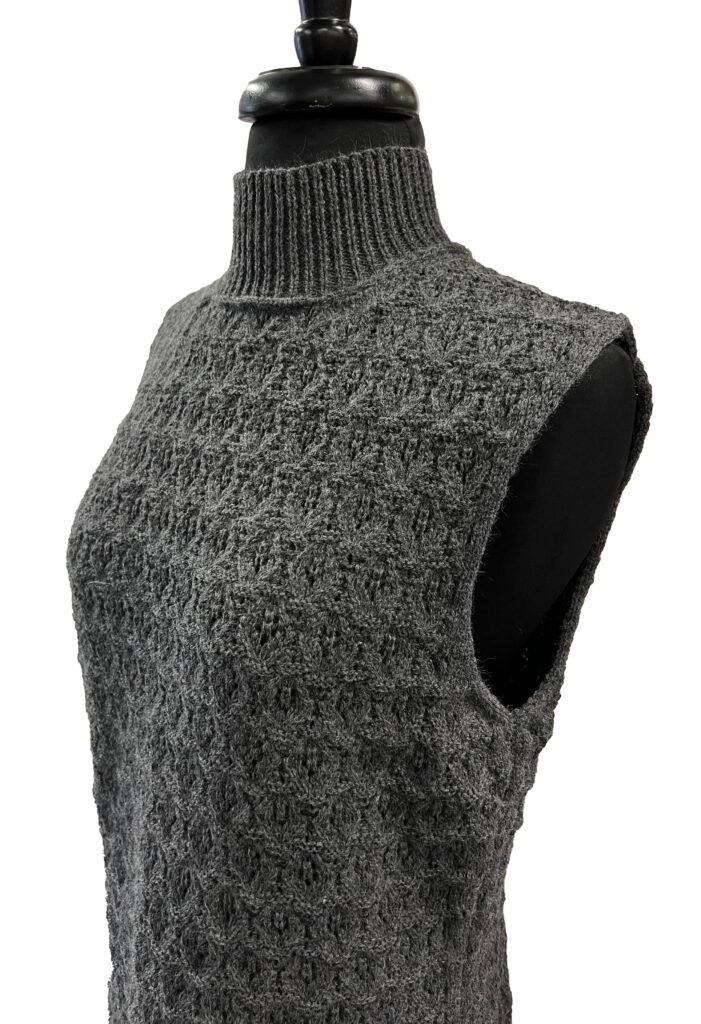
How does your personal aesthetic influence your design work? Do you think it should?
I’d identify my personal aesthetic as “Modern Grandma.” I thrift the majority of the clothes I wear and am especially drawn to the vintage pieces that were definitely donated by someone’s grandma! Some of these pieces are handmade knit sweaters that are embellished and crafted with extreme love, care, and attention to detail. I feel that my knit work has a vintage feeling-I’m often inspired by vintage silhouettes and structures in the samples and finished products I make. I think it’s okay to have your personal aesthetic influence your design direction, but you should never design only for yourself because your work would become one-dimensional. Our program is amazing at breaking you out of your comfort zone so you grow to be able to design.
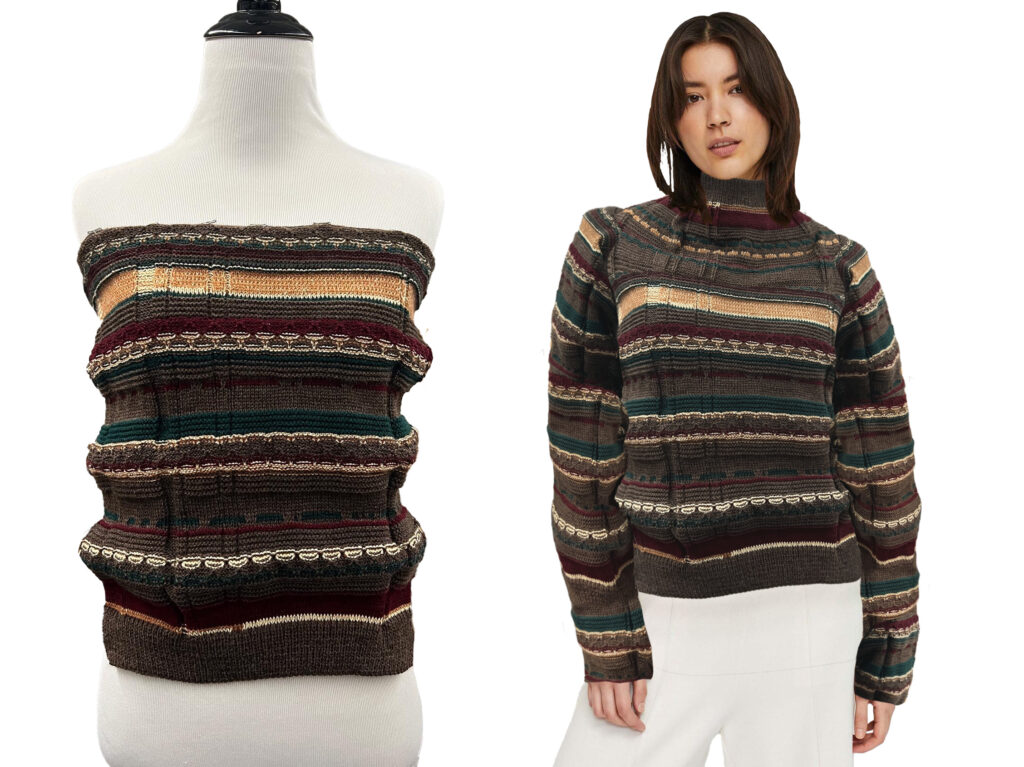
What is your favorite thing to do to distract yourself from school stress?
I love to do my nails when I need a distraction from school stress. I’ve gotten really into it the past couple of years doing gel extensions and acrylic nails. I like to go on Pinterest and find really challenging nail art inspiration and try to replicate it. It’s a good way to use my artistic ability without using my creativity — that’s on reserve for textiles!
What is your favorite class and why?
Advanced Weft Knit has been the reigning favorite throughout my college career. Knitting quickly became my favorite textile discipline after taking Knit Tech 1 and progressing through the five-week knitting sections in our design studios for fashion and home interiors. I wanted to continue learning more about knitting, so I took this class as an elective. It is such an eye-opening course! It allows you to take your knowledge of knitting from previous studios of manual machine knitting and translate it to the modern textile industry. In this class, I learned to program knit swatches and even products on Apex and operate the Shima Seiki machine myself! It opened my eyes to so many more knitting possibilities and gave me a clear vision of a career that I see for myself.
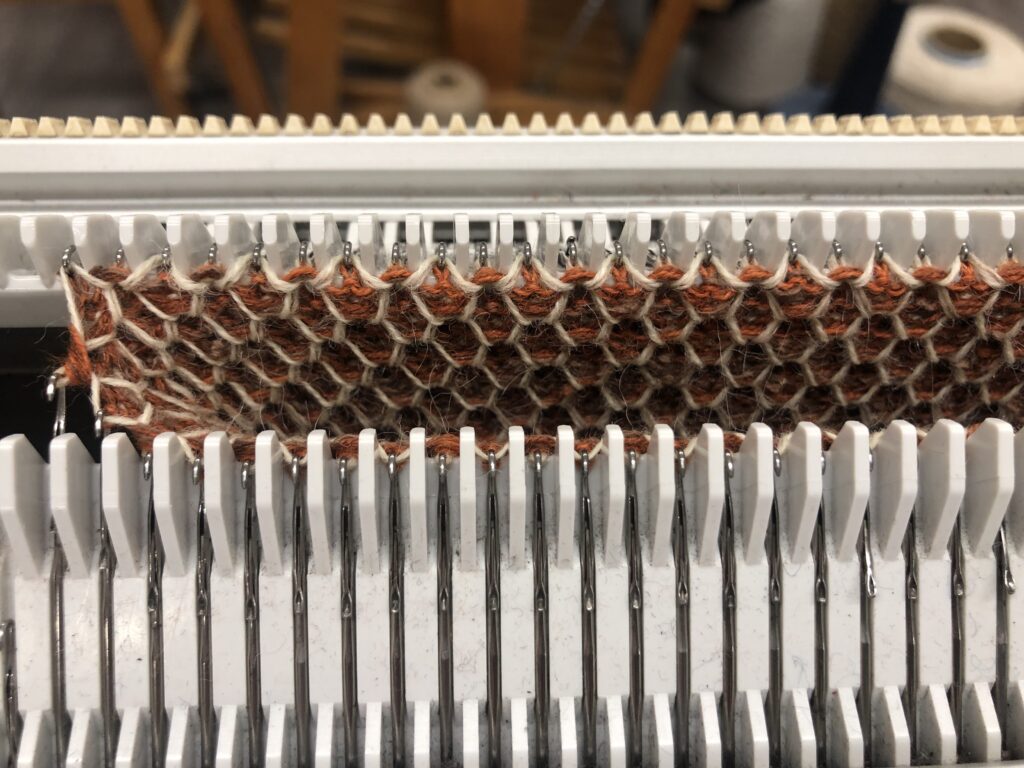
What advice would you give an incoming student in the Textile Design department?
Don’t be afraid to talk to upper-level students and graduate students! It certainly was my afraid during freshman year because I am super shy around new people. Still, as I continued in the program, I began asking upper-level students for advice and questions about troubleshooting issues with samples. With a smaller program like ours, I think it’s really important to create a friendly community in the studio, and it makes the projects more fun when you’re working beside your friends!
What is your favorite thing about Textile Design?
My favorite thing about Textile Design is how it’s a perfect blend of art and science. Textiles are meant to be beautiful works of art but must also perform a purpose. We are artists and engineers at the same time – we need to consider our end-use, market, and customer demographic when selecting color palettes, patterns, motifs, and yarns. Our goal is to make an intriguing and intentional fabric.
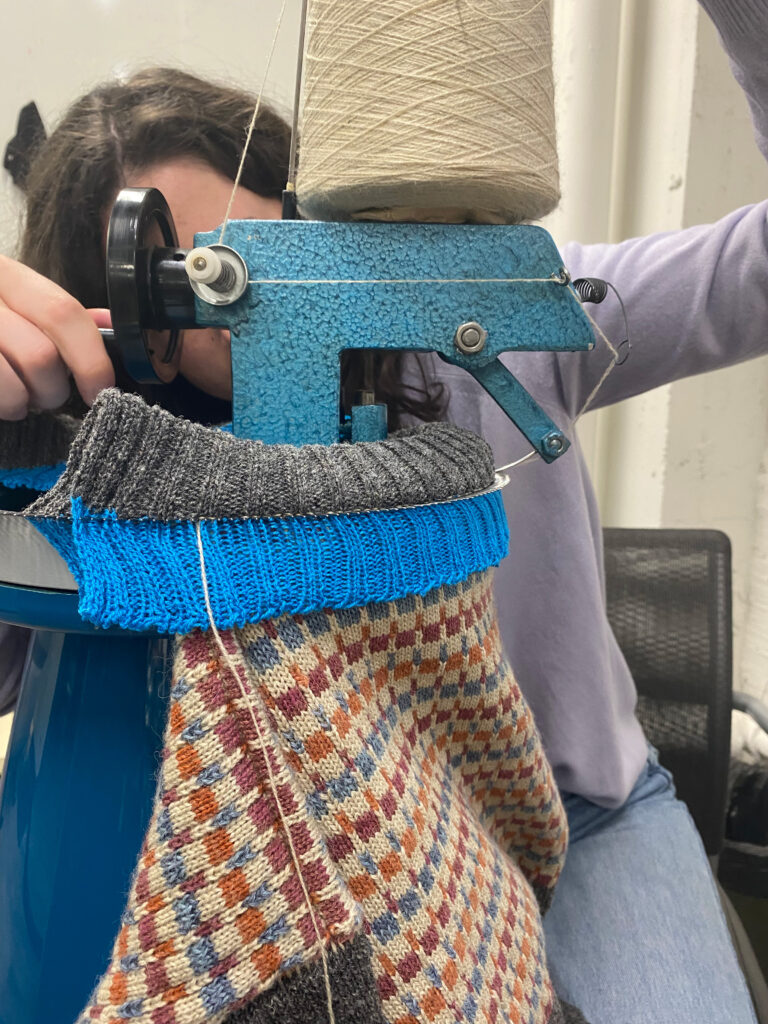


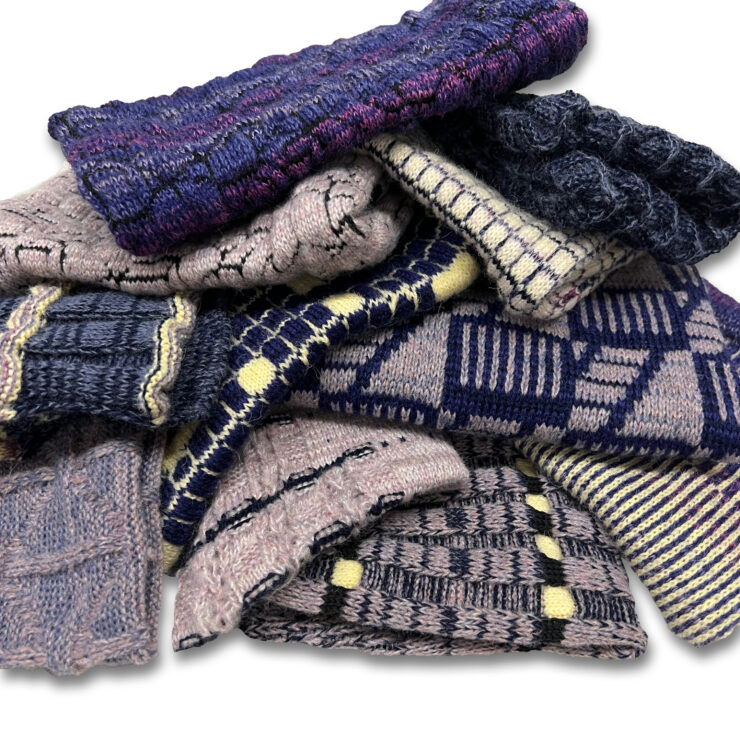
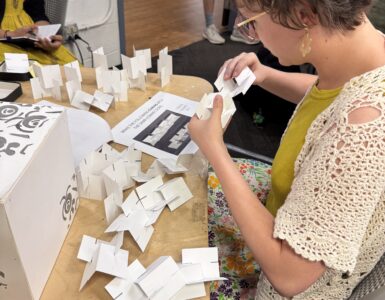
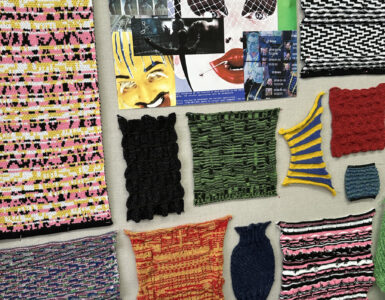
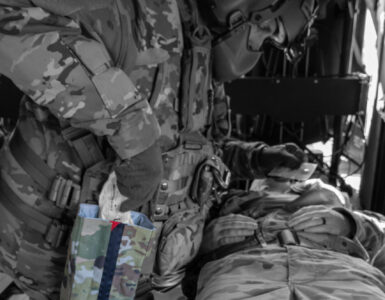

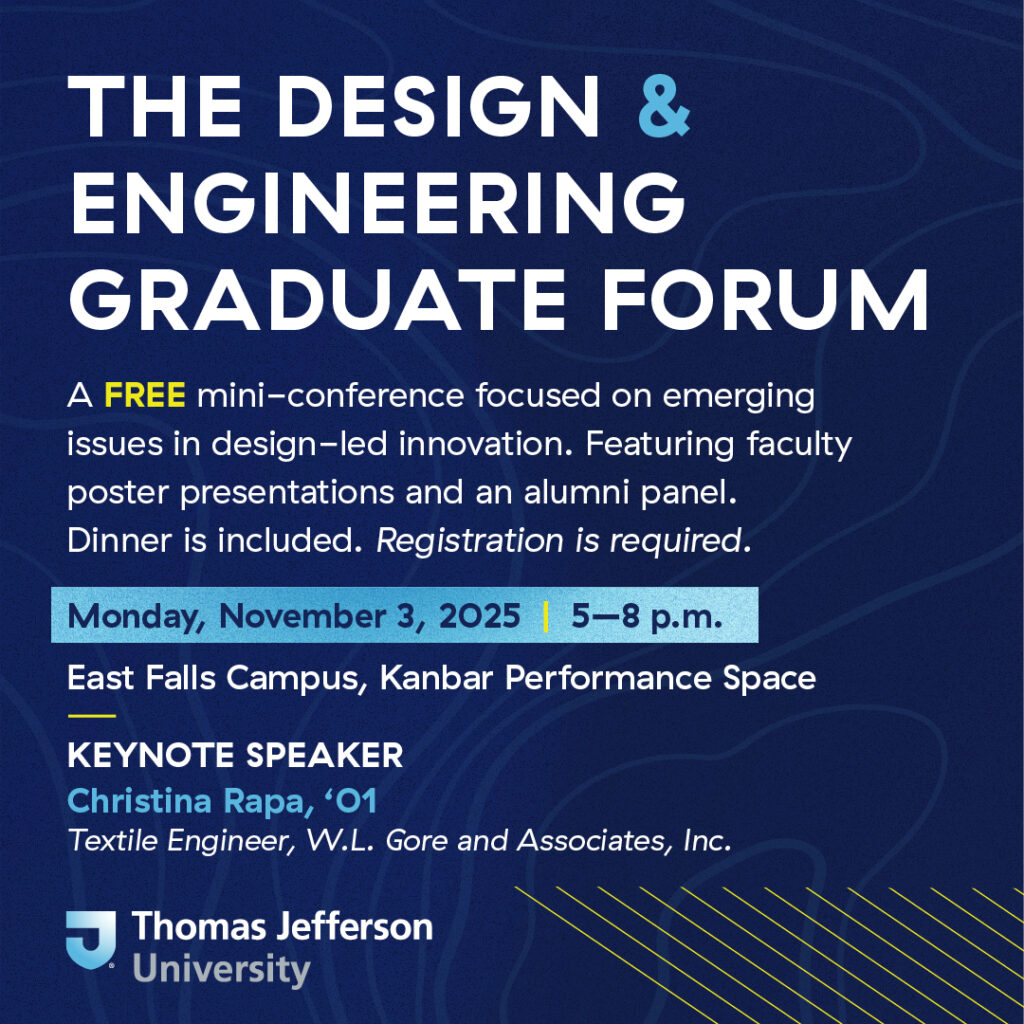
Add comment